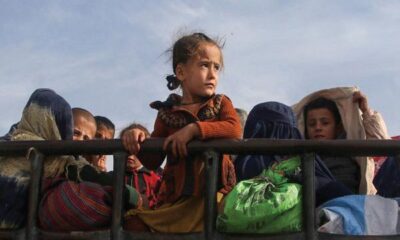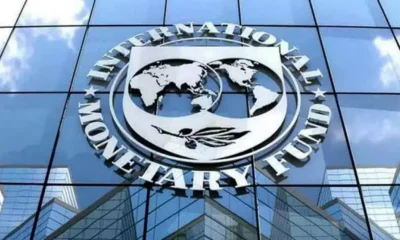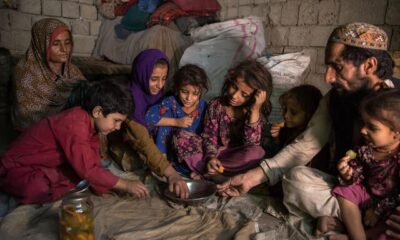The tuberculosis mortality rate in the Southeast Asia region saw a rise of 8.6 percent in 2021 as compared to 2015, according to an official release from the World Health Organization (WHO).
According to the release, the regional director of WHO, South-East Asia Region, Saima Wazed, said, “The TB mortality rate in the region increased by 8.6 percent in 2021 compared to 2015. The probability of death between the ages of 30 and 70 from four major diseases—cardiovascular diseases, cancer, diabetes, and chronic respiratory diseases—is still unacceptably high at 21.6 percent.”
She added that the poorest and groups with vulnerabilities face the greatest barriers to accessing needed healthcare, often with catastrophic consequences for their health and well-being.
“Poor quality care accounts for more diseases and deaths than lack of access to care,” she said. The Regional Director stated further that gender inequality affects equitable access to diagnosis and treatment of non-communicable health conditions.
The WHO will focus the spotlight on the theme ‘My Health, My Right’ on World Health Day this year on April 7. According to an official press release from WHO, South East Asia, “In a world witnessing multiple crises, from diseases to disasters to conflicts and climate change, realizing people’s right to health is now more important than ever. To mark the foundation of the World Health Organization, the spotlight this year is on ‘My Health, My Right’, on World Health Day, celebrated on April 7.”
Wazed also expanded on the significance of acknowledging the ‘Right to Health’ for all. “Realizing the right to health for all means creating conditions where everyone, everywhere, can access high-quality health facilities, services, and goods that prioritize people’s needs, understanding, and dignity,” Wazed said. “It also means a full set of rights that enable people to live healthily, such as education, safe water and food, nutritious food, adequate housing, good working and environmental conditions, and information—or the underlying determinants of health,” she added. “To fulfill the right to health, both health services and the underlying determinants should be available, accessible, acceptable, and of adequate quality,” she said.
The right to the highest attainable standard of mental and physical health—or the right to health—has been core to the WHO’s mission, globally and in the region. It is enshrined in the WHO’s Constitution.
As WHO marks its seventy-sixth year on April 7, the Southeast Asia Region has seen many gains and has much to celebrate about the right to health. “The Universal Health Coverage Service Coverage Index has improved from 47 in 2010 to 62 in 2021. The average density of medical doctors, nurses, and midwives in the region stands at 28.05 per 10,000 population, up by 30.5 percent since 2015,” she said. “The region achieved a 68.5 percent reduction in the maternal mortality ratio between 2000 and 2020. The under-five mortality rate declined significantly from 84 per 1000 live births in 2000 to 29 per 1000 live births in 2021, and the neonatal mortality rate declined from 41 per 1000 live births in 2000 to 17 per 1000 live births in 2021. Between 2015 and 2021, new HIV infections declined by 25 percent and malaria incidence by 62 percent,” she added.
However, despite progress, we still have a considerable way to go to make the right to health a reality for all in the WHO South-East Asia Region, the Regional Director said. She added that despite global commitments to the right to health, nearly 40 percent of the region’s people lack coverage of essential health services. Investment in health by national governments, which is the foundation of advancing the right to health, is unacceptably low, which has resulted in high out-of-pocket expenditures, according to the release. The proportion of households experiencing financial hardship in accessing basic health care has been rising.
“Violence against women and girls—a violation of their human rights and a priority public health issue—remains pervasive. More than one in every three women in the region has experienced intimate partner violence at least once in their lifetime, with rural and uneducated women and those from the poorest households facing a significantly higher risk,” she said.
“Too many still face stigma related to certain health conditions, such as TB, HIV/AIDS, disability, or mental illness. They also face discrimination in the health system based on their gender, class, ethnicity, religion, sexual orientation, or other characteristics,” the Regional Director said.
Wazed stated that equality and non-discrimination are core to a human rights-based approach to health. “A human rights-based approach also entails adherence to the principle of participation. For example, by ensuring that those most affected by certain health conditions or health policies and decisions have a say in how these decisions are made,” she said.
“Accountability is also integral to a human rights-based approach. For example, reporting back to affected groups and communities about the performance of the health system or health programs to address their needs,” she said.
All governments and other duty-bearers must respect, protect, and fulfill the right to health and other human rights, and to ensure their progressive realization, the WHO release went further, adding, “Governments need to increase investments in health—especially to advance universal health coverage grounded in a primary health care approach.
“Good laws can lay the foundation for more effective tobacco control, environmental protection, better nutrition, control of obesity and cardiovascular diseases, fair and equal working conditions, and much more. Health services need to be made more available, accessible, acceptable, and of better quality for all,” Wazed said.
“WHO is committed to advancing the right to health and other human rights. Let’s make the right to health a reality for all,” she added.


 Opinion2 years ago
Opinion2 years ago
 Fashion7 years ago
Fashion7 years ago
 Entertainment7 years ago
Entertainment7 years ago
 Entertainment7 years ago
Entertainment7 years ago
 Opinion2 years ago
Opinion2 years ago
 Business News2 years ago
Business News2 years ago
 Policy&Politics2 years ago
Policy&Politics2 years ago
 Business News2 years ago
Business News2 years ago





















